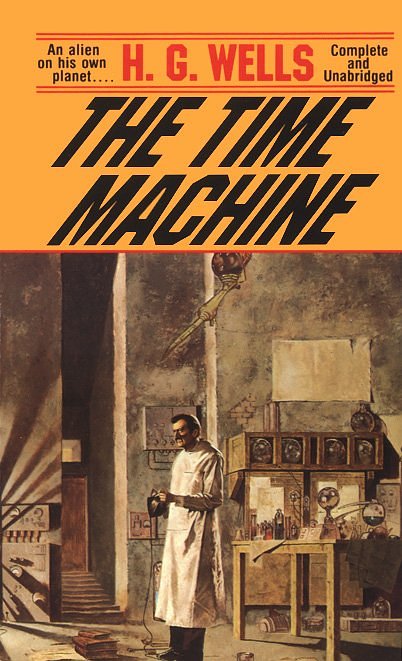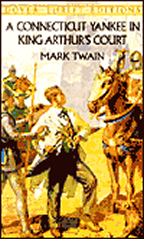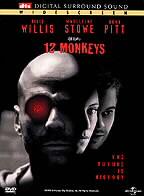






Time travel is a popular theme in
many aspects of modern human culture. For years the literary world has enthralled
us with tales of time travelers and their adventures, and in modern times
science has piqued our interest with the idea that time travel might just
become a reality some day. The literary genre of Science Fiction by definition
incorporates the ideas and theories of science into stories or novels. In
some respects, Science Fiction can be seen as a cultural history of science,
because the themes contained in SF works mirror the scientific theories of
the time. Another interesting characteristic of Science Fiction is that it
creates a duality in the scientific theories of which it speaks. In the case
of time travel, there is a split between the modern theories of time travel
as held by the scientific community, and the concept of time travel as a literary
device. In other words, Science Fiction writers, in writing stories on the
subject, have created two forms of time travel; literary and scientific. Two
literary works will be used to examine this idea: Edward Page Mitchell’s
“The Clock That Went Backward” (1881), and Michael Crichton’s
Timeline (1999).
First the idea of a duality in the
concept of time travel must be explained. From one point of view, time travel
in itself is completely speculative. Since it is currently impossible, all
discussion on the topic is in the realm of fiction. This is true; however,
it does not negate the fact that this “fictitious” discussion
can be split quite cleanly into two categories. The first category is time
travel by means that science has overwhelmingly decided are not feasible.
Magic, temporal portals (not wormholes), and classic “time machines”
are a few examples of literary time travel devices that have little promise
of becoming reality. The second category is those devices which hold at least
some potential to become a reality. Quantum time travel and wormholes are
example of this type. It is important to note that both of these categories
exist in the literary world. That is to say, the division is not literary/scientific,
but rather reality potential/no potential (Flynn, Nova).
Mitchell’s “The Clock That
Went Backward” is an example of the first category. In the story, the
time travel device is an old clock with “magical” powers. In Mitchell’s
case, scientific time travel theory was not developed to any extent, and thus
he had no scientific basis to back his device. However, his approach has been
and continues to be mimicked by a wide variety of writers. The benefit to
this non-scientific type of time travel is that it makes no claims to be a
real possibility. Mitchell doesn’t expect a reader to believe a magic
clock can transport people in time. Without this reality claim, the writer
is free to play with other themes involved in the issue. The classic grandfather
paradox, which says one cannot travel back in time and kill one’s own
ancestor, is a very common subject that deals with the extent, if any, of
the effect a time traveler could have on the time period they travel back
to. This idea of temporal effects and consequences is well played throughout
the literary genre. Without being tied down with scientific theory, an author
can explore the implications of such cause-and-effect relationships without
fear of being watered down by the implausibility of the entire plot (Mitchell).
Timeline, by Michael Crichton, is an
example of the second category. The method of time travel in this story is
fairly close to one leading scientific theory of the time: quantum time travel.
In order to successfully use this category in a literary work, the author
must be careful their descriptions of the actual time travel process. The
whole point of using a quasi-real theory is to lend a sense of believability
to the story, so the process must be explained simply enough so that it is
relatively accessible to any reader, and at the same time the explanation
must be detailed and complicated enough so that it encompasses the general
idea of the scientific theory. The benefit of using this category is that
the stories or novels have a unique sense of realism to them. They are, of
course, still just stories, but the inclusion of this scientific fact or semi-fact
forces the reader to not only look at the themes raised by the issue of time
travel itself, but also to look at the issue of the actual process (Crichton).
This dualism in the concept of time
travel as a literary device has many implications. In one sense, it models
the distinction between “hard” SF, SF that deals mainly with scientific
fact, and “soft” SF, which is more freely predictive. As stated
before, Science Fiction can be used, to an extent, as a survey of where the
science of the time is. The time travel split creates two perspectives from
which to examine this history of science, because there are those stories
that attempt to stay true to science, which give an idea of what some common
scientific theories of the time were, and those that do not, which show the
cultural understanding of time travel.
Some would argue that science and literature are two unconnected fields populated by very different types of people. However, it is clear that they are connected and have a very important impact on each other. The literary world, over the course of time, was able to split a scientific idea into two essentially evolutionary courses that, while both stemming from the same source and existing in the same time, can tell a reader very different things about the scientific and cultural views of time travel. The literary split of this topic shows how literature, particularly SF, can take a relatively narrow subject, such as time travel, and expand it to something much larger. Perhaps this split will close if ever time travel becomes a reality. Or perhaps at that point we will see another branching, and the idea of time travel, as addressed by the literary world, will become even more complex.
(Essay by David Morine)
Bibliography
• Mitchell, Edward Page, “The Clock that Went Backward”,
Roberts, Garyn G., The Prentice Hall Anthology of Science Fiction and Fantasy,
Prentice-Hall, New Jersey, 2001. pp. 361-369
• Crichton, Michael, Timeline, Ballantine Books. 1999
• Flynn, John L., “Time Travel Literature”.http://www.towson.edu/~flynn/timetv.html, 4/13/03
• Nova, “Time Travel”, http://www.pbs.org/wgbh/nova/time/, 4/13/03
• “Michael Crichton’s Timeline”, http://www.rambles.net/crichton_timeline.html, 4/14/03